Biqian Feng
WVSC: Wireless Video Semantic Communication with Multi-frame Compensation
Mar 27, 2025Abstract:Existing wireless video transmission schemes directly conduct video coding in pixel level, while neglecting the inner semantics contained in videos. In this paper, we propose a wireless video semantic communication framework, abbreviated as WVSC, which integrates the idea of semantic communication into wireless video transmission scenarios. WVSC first encodes original video frames as semantic frames and then conducts video coding based on such compact representations, enabling the video coding in semantic level rather than pixel level. Moreover, to further reduce the communication overhead, a reference semantic frame is introduced to substitute motion vectors of each frame in common video coding methods. At the receiver, multi-frame compensation (MFC) is proposed to produce compensated current semantic frame with a multi-frame fusion attention module. With both the reference frame transmission and MFC, the bandwidth efficiency improves with satisfying video transmission performance. Experimental results verify the performance gain of WVSC over other DL-based methods e.g. DVSC about 1 dB and traditional schemes about 2 dB in terms of PSNR.
Energy Efficiency Maximization for Movable Antenna-Enhanced System Based on Statistical CSI
Jan 18, 2025


Abstract:This paper investigates an innovative movable antenna (MA)-enhanced multiple-input multiple-output (MIMO) system designed to enhance communication performance. We aim to maximize the energy efficiency (EE) under statistical channel state information (S-CSI) through a joint optimization of the transmit covariance matrix and the antenna position vectors (APVs). To solve the stochastic problem, we consider the large number of antennas scenario and resort to deterministic equivalent (DE) technology to reformulate the system EE w.r.t. the transmit variables, i.e., the transmit covariance matrix and APV, and the receive variables, i.e., the receive APV, respectively. Then, we propose an alternative optimization (AO) algorithm to update the transmit variables and the receive variables to maximize the system EE, respectively. Our numerical results reveal that, the proposed MA-enhanced system can significantly improve EE compared to several benchmark schemes and the optimal performance can be achieved with a finite size of movement regions for MAs.
Weighted Sum-Rate Maximization for Movable Antenna-Enhanced Wireless Networks
Apr 15, 2024


Abstract:This letter investigates the weighted sum rate maximization problem in movable antenna (MA)-enhanced systems. To reduce the computational complexity, we transform it into a more tractable weighted minimum mean square error (WMMSE) problem well-suited for MA. We then adopt the WMMSE algorithm and majorization-minimization algorithm to optimize the beamforming and antenna positions, respectively. Moreover, we propose a planar movement mode, which constrains each MA to a specified area, we obtain a low-complexity closed-form solution. Numerical results demonstrate that the MA-enhanced system outperforms the conventional system. Besides, the computation time for the planar movement mode is reduced by approximately 30\% at a little performance expense.
Joint Beamforming and Antenna Movement Design for Moveable Antenna Systems Based on Statistical CSI
Aug 18, 2023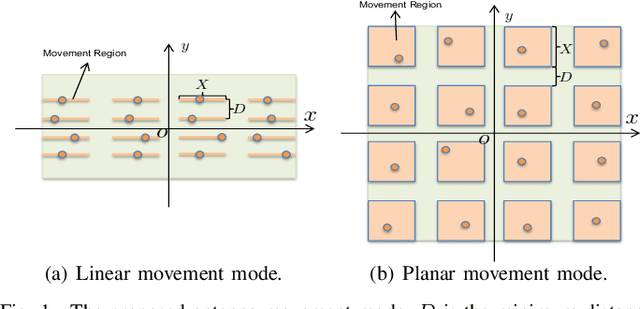
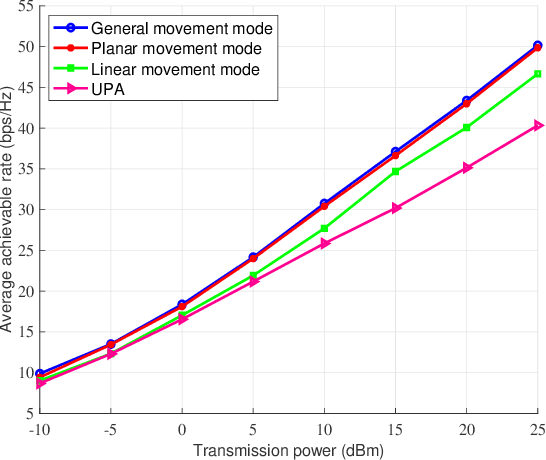
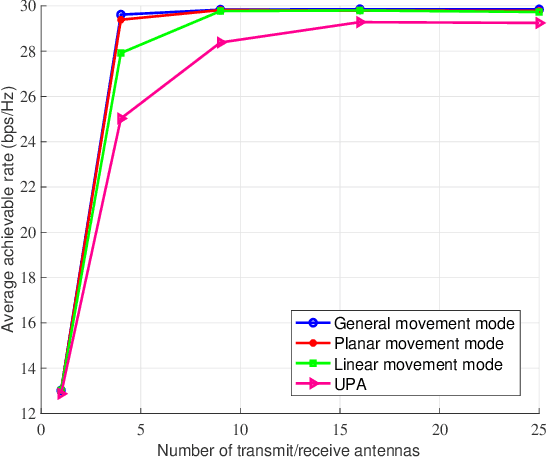
Abstract:This paper studies a novel movable antenna (MA)-enhanced multiple-input multiple-output (MIMO) system to leverage the corresponding spatial degrees of freedom (DoFs) for improving the performance of wireless communications. We aim to maximize the achievable rate by jointly optimizing the MA positions and the transmit covariance matrix based on statistical channel state information (CSI). To solve the resulting design problem, we develop a constrained stochastic successive convex approximation (CSSCA) algorithm applicable for the general movement mode. Furthermore, we propose two simplified antenna movement modes, namely the linear movement mode and the planar movement mode, to facilitate efficient antenna movement and reduce the computational complexity of the CSSCA algorithm. Numerical results show that the considered MA-enhanced system can significantly improve the achievable rate compared to conventional MIMO systems employing uniform planar arrays (UPAs) and that the proposed planar movement mode performs closely to the performance upper bound achieved by the general movement mode.
Proactive Content Caching Scheme in Urban Vehicular Networks
May 12, 2023Abstract:Stream media content caching is a key enabling technology to promote the value chain of future urban vehicular networks. Nevertheless, the high mobility of vehicles, intermittency of information transmissions, high dynamics of user requests, limited caching capacities and extreme complexity of business scenarios pose an enormous challenge to content caching and distribution in vehicular networks. To tackle this problem, this paper aims to design a novel edge-computing-enabled hierarchical cooperative caching framework. Firstly, we profoundly analyze the spatio-temporal correlation between the historical vehicle trajectory of user requests and construct the system model to predict the vehicle trajectory and content popularity, which lays a foundation for mobility-aware content caching and dispatching. Meanwhile, we probe into privacy protection strategies to realize privacy-preserved prediction model. Furthermore, based on trajectory and popular content prediction results, content caching strategy is studied, and adaptive and dynamic resource management schemes are proposed for hierarchical cooperative caching networks. Finally, simulations are provided to verify the superiority of our proposed scheme and algorithms. It shows that the proposed algorithms effectively improve the performance of the considered system in terms of hit ratio and average delay, and narrow the gap to the optimal caching scheme comparing with the traditional schemes.
Linear MIMO Precoders Design for Finite Alphabet Inputs via Model-Free Training
Aug 04, 2022



Abstract:This paper investigates a novel method for designing linear precoders with finite alphabet inputs based on autoencoders (AE) without the knowledge of the channel model. By model-free training of the autoencoder in a multiple-input multiple-output (MIMO) system, the proposed method can effectively solve the optimization problem to design the precoders that maximize the mutual information between the channel inputs and outputs, when only the input-output information of the channel can be observed. Specifically, the proposed method regards the receiver and the precoder as two independent parameterized functions in the AE and alternately trains them using the exact and approximated gradient, respectively. Compared with previous precoders design methods, it alleviates the limitation of requiring the explicit channel model to be known. Simulation results show that the proposed method works as well as those methods under known channel models in terms of maximizing the mutual information and reducing the bit error rate.
Enhanced Preamble Based MAC Mechanism for IIoT-oriented PLC Network
Mar 22, 2022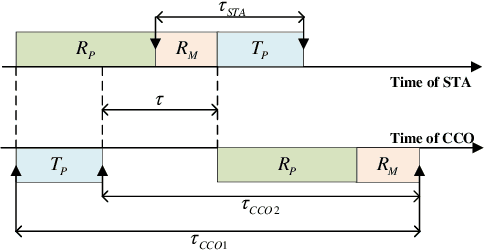
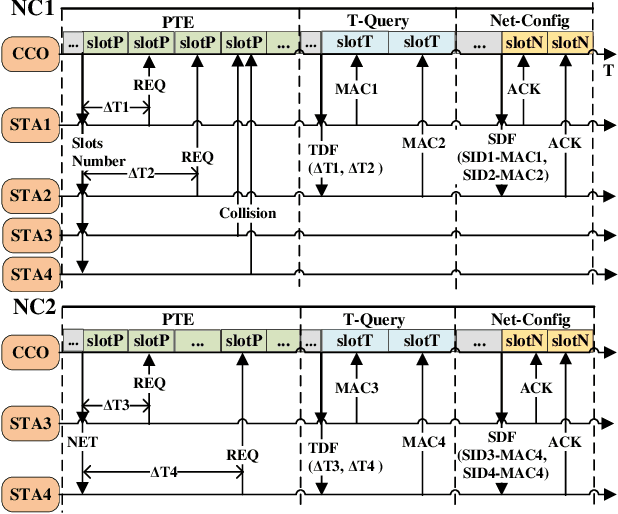
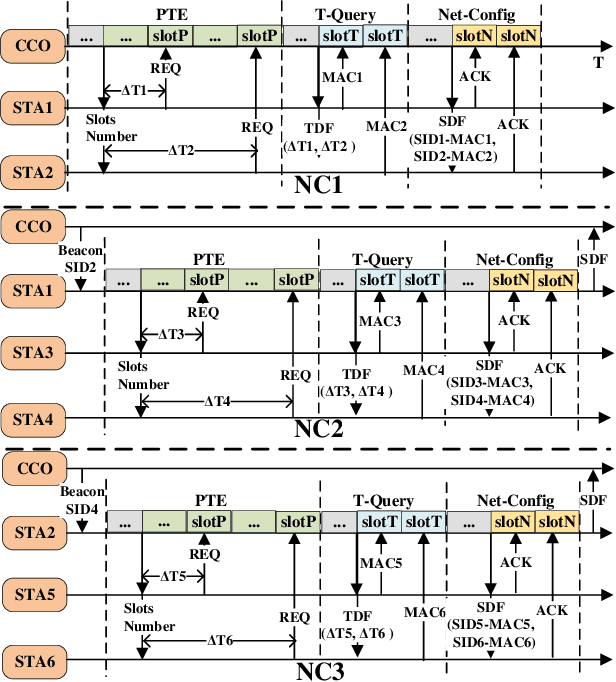

Abstract:In this paper, we propose an enhanced preamble based media access control mechanism (E-PMAC), which can be applied in power line communication (PLC) network for Industrial Internet of Things (IIoT). We introduce detailed technologies used in E-PMAC, including delay calibration mechanism, preamble design, and slot allocation algorithm. With these technologies, E-PMAC is more robust than existing preamble based MAC mechanism (P-MAC). Besides, we analyze the disadvantage of P-MAC in multi-layer networking and design the networking process of E-PMAC to accelerate networking process. We analyze the complexity of networking process in P-MAC and E-PMAC and prove that E-PMAC has lower complexity than P-MAC. Finally, we simulate the single-layer networking and multi-layer networking of E-PMAC, P-MAC, and existing PLC protocol, i.e. , IEEE1901.1. The simulation results indicate that E-PMAC spends much less time in networking than IEEE1901.1 and P-MAC. Finally, with our work, a PLC network based on E-PMAC mechanism can be realized.
Optimization Techniques in Reconfigurable Intelligent Surface Aided Networks
Jun 29, 2021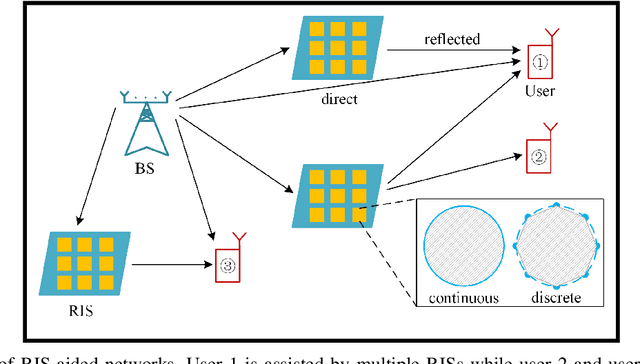
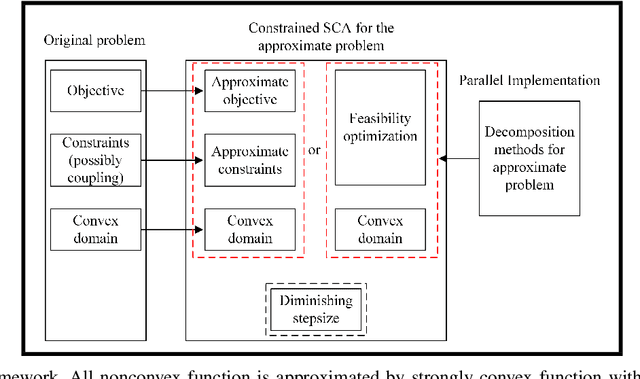
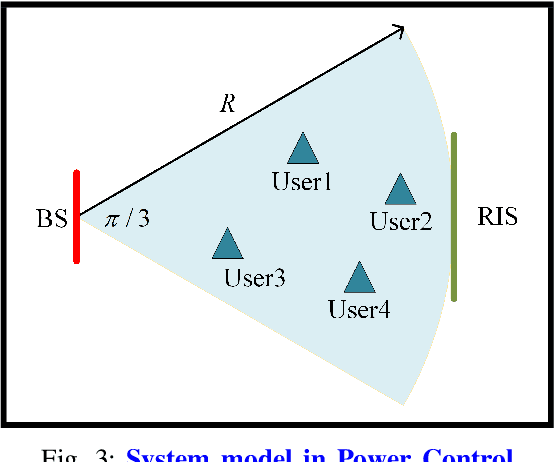
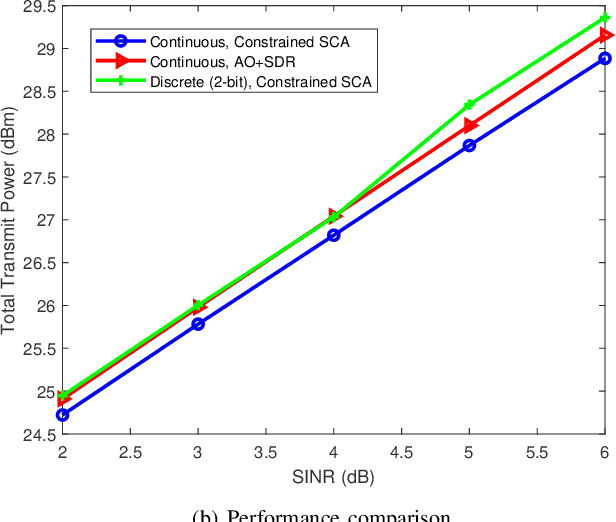
Abstract:Reconfigurable intelligent surface (RIS)-aided networks have been investigated for the purpose of improving the system performance. However, the introduced unit modulus phase shifts and coupling characteristic bring enormous challenges to the optimization in the RIS-aided networks. Many efforts have been made to jointly optimize phase shift vector and other parameters. This article intends to survey the latest research results about the optimization in RIS-aided networks. A taxonomy is devised to categorize the existing literatures based on optimization types, phase shift form, and decoupling methods. Furthermore, in alternating optimization framework, we introduce in detail how to exploit the aforementioned technologies flexibly. It is known that most works could not guarantee a stationary point. To overcome this problem, we propose a unified framework for the optimization problem of RIS-aided networks with continuous phase shifts to find a stationary point. Finally, key challenges are outlined to provide guidelines for the domain researchers and designers to explore more efficient optimization frameworks, and then open issues are discussed.
 Add to Chrome
Add to Chrome Add to Firefox
Add to Firefox Add to Edge
Add to Edge